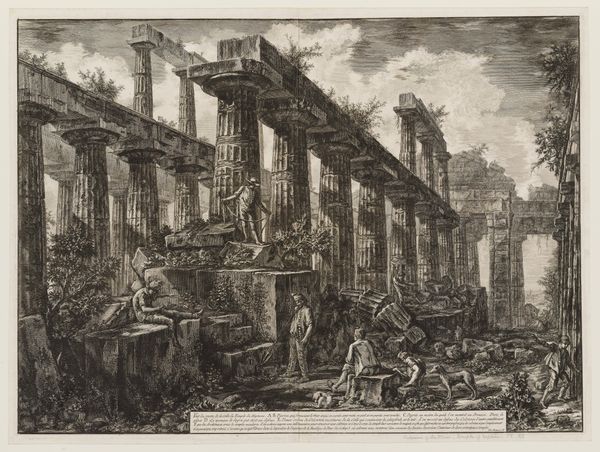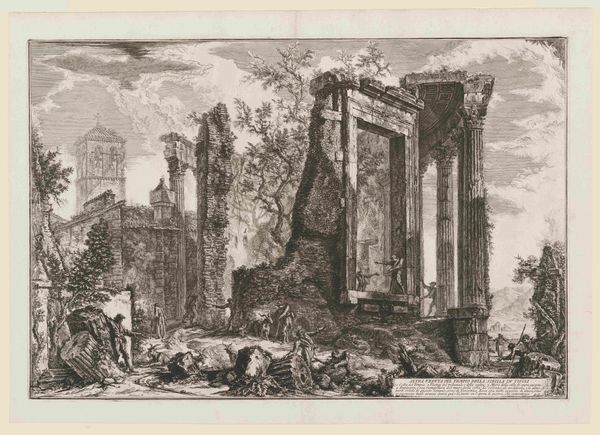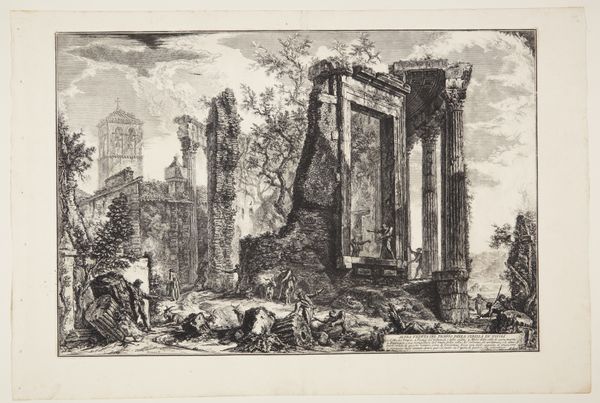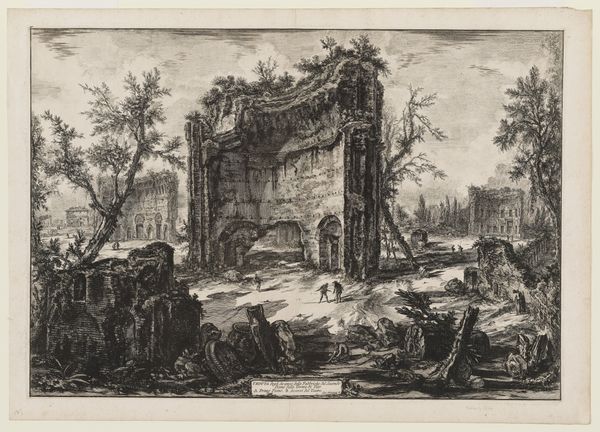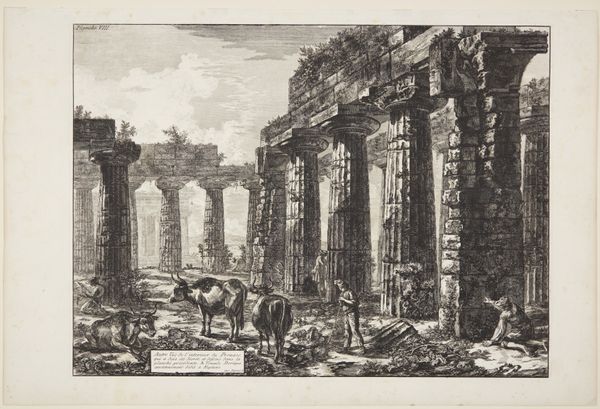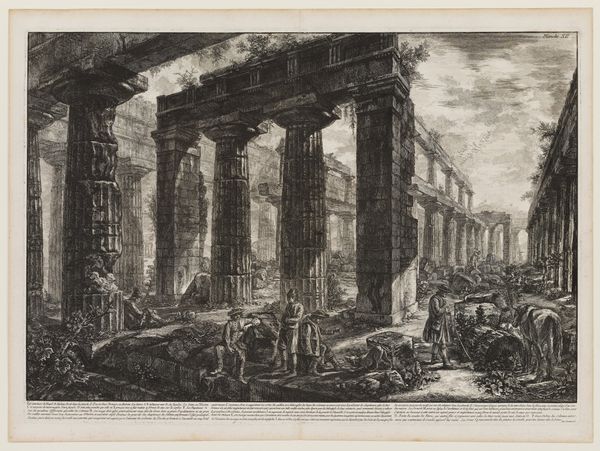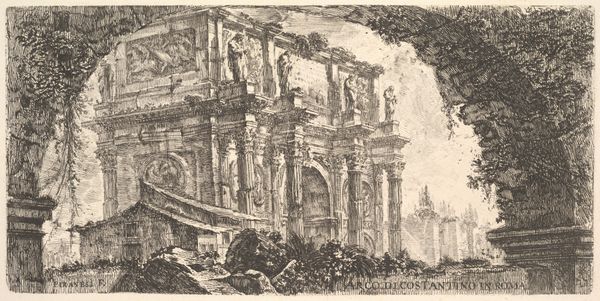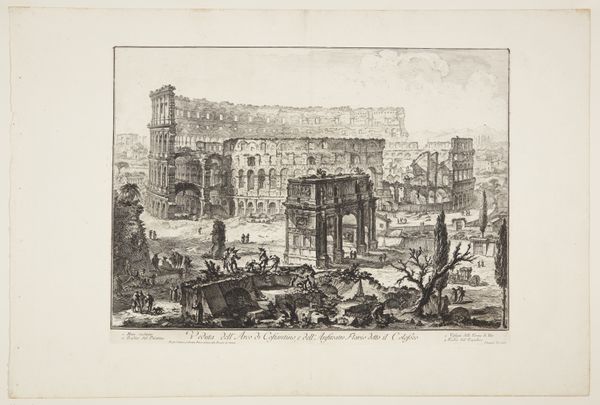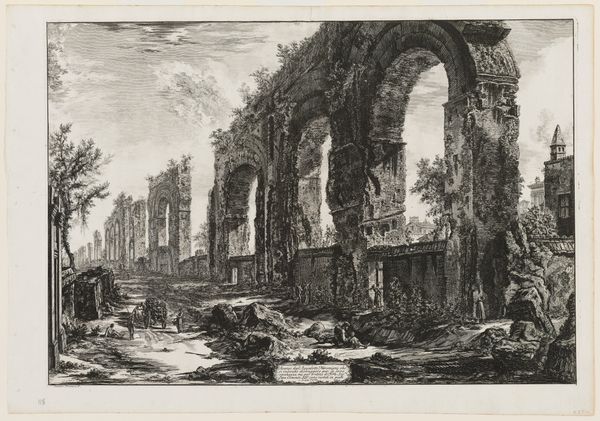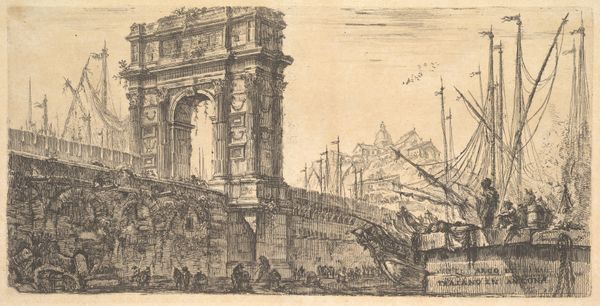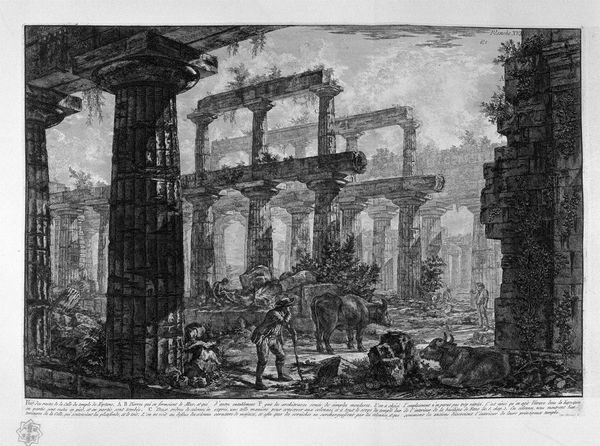![View of the remains of the cella of the Temple of Neptune [...] by Giovanni Battista Piranesi](/_next/image?url=https%3A%2F%2Fd2w8kbdekdi1gv.cloudfront.net%2FeyJidWNrZXQiOiAiYXJ0ZXJhLWltYWdlcy1idWNrZXQiLCAia2V5IjogImFydHdvcmtzLzY3ZDdiMzY1LTc0OTktNGYyYi1hYzc2LTE4MTY5YTA0YzA2YS82N2Q3YjM2NS03NDk5LTRmMmItYWM3Ni0xODE2OWEwNGMwNmFfZnVsbC5qcGciLCAiZWRpdHMiOiB7InJlc2l6ZSI6IHsid2lkdGgiOiAxOTIwLCAiaGVpZ2h0IjogMTkyMCwgImZpdCI6ICJpbnNpZGUifX19&w=3840&q=75)
View of the remains of the cella of the Temple of Neptune [...] 1778
0:00
0:00
print, engraving
# print
#
landscape
#
perspective
#
figuration
#
romanesque
#
ancient-mediterranean
#
line
#
history-painting
#
italian-renaissance
#
engraving
Dimensions: 480 mm (height) x 683 mm (width) (plademaal)
This print, “View of the remains of the cella of the Temple of Neptune,” was made by Giovanni Battista Piranesi in the 18th century, using etching and engraving. These are intaglio processes, meaning that the image is incised into a metal plate, which then receives ink. The extraordinary detail visible here is a testament to the artist’s skill. Look closely, and you can see how Piranesi has carefully modulated the lines to create a sense of depth and atmosphere. The architecture of the temple is rendered with precision, yet the overall effect is romantic and evocative. Piranesi was not only an artist, but also an antiquarian, keenly interested in the material culture of the past. The amount of work involved in the production process, especially in such a large print, speaks to the growing market for historical imagery at this time. Piranesi was meeting a demand, creating an object of beauty that also served as a record of ancient grandeur. This print exemplifies how art and craft, design and industry are all interconnected.
Comments
No comments
Be the first to comment and join the conversation on the ultimate creative platform.
